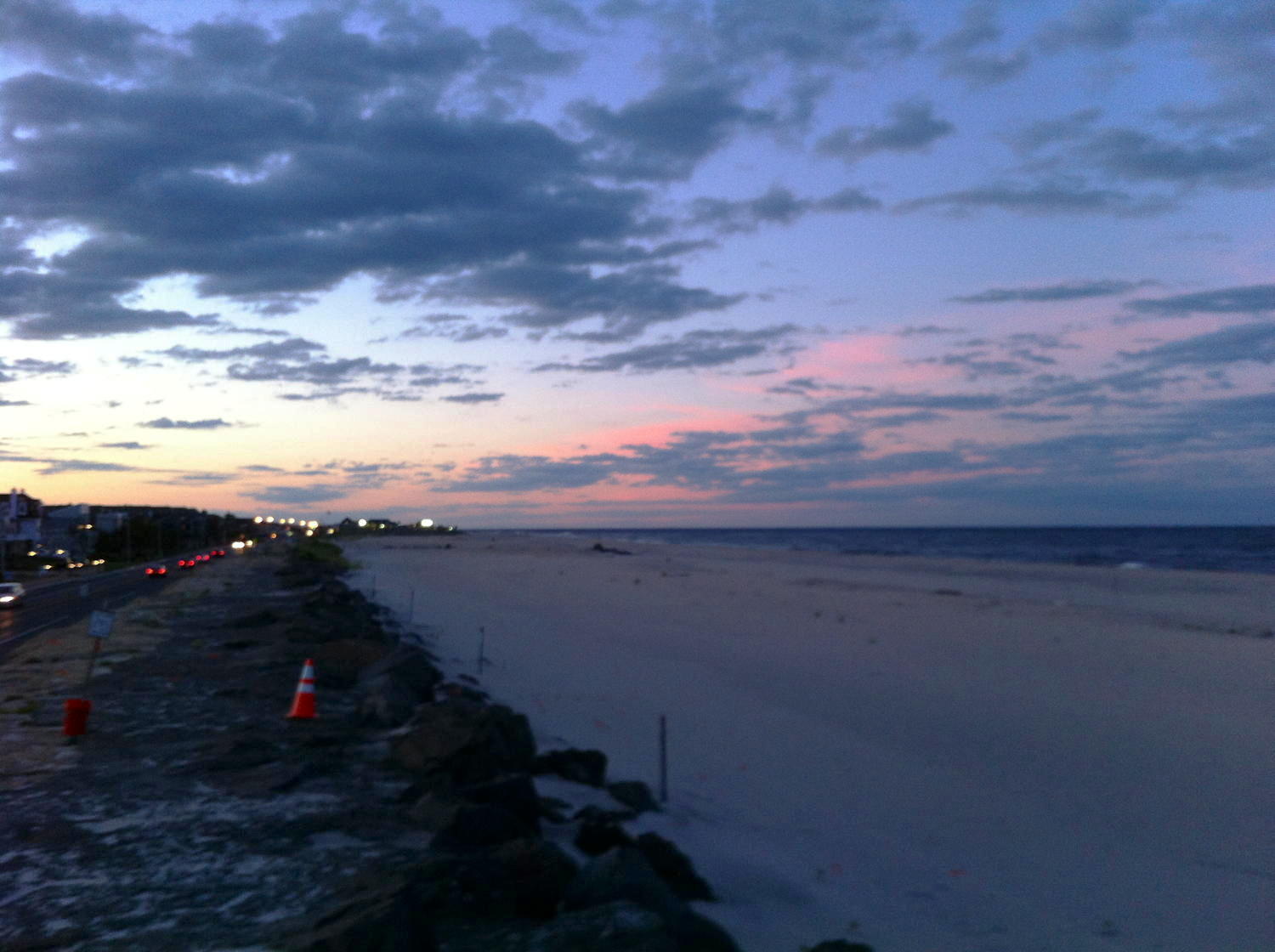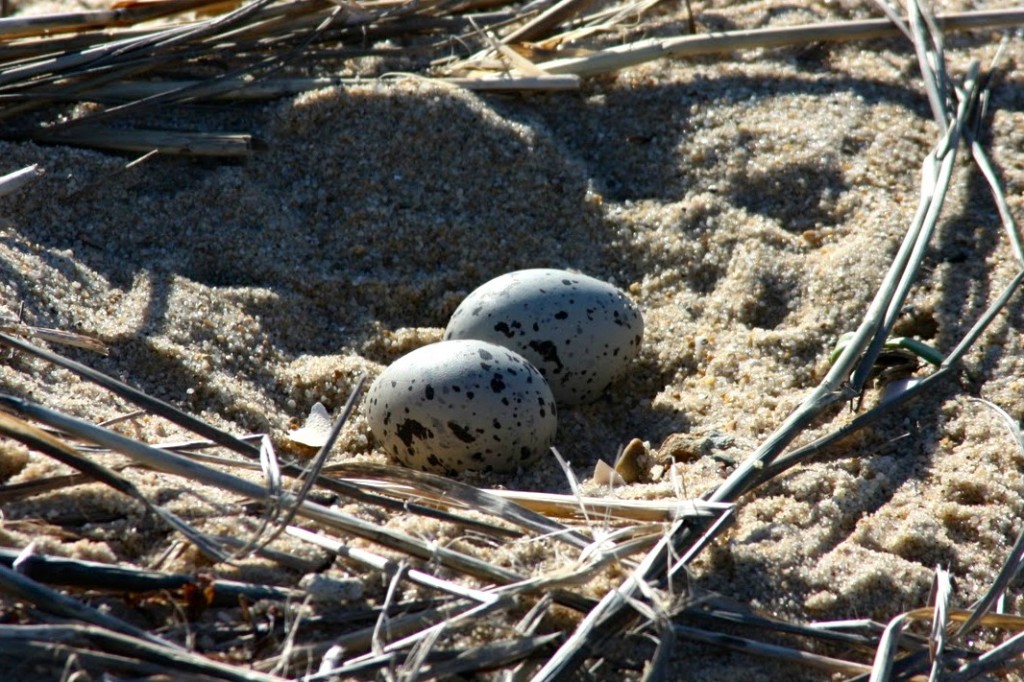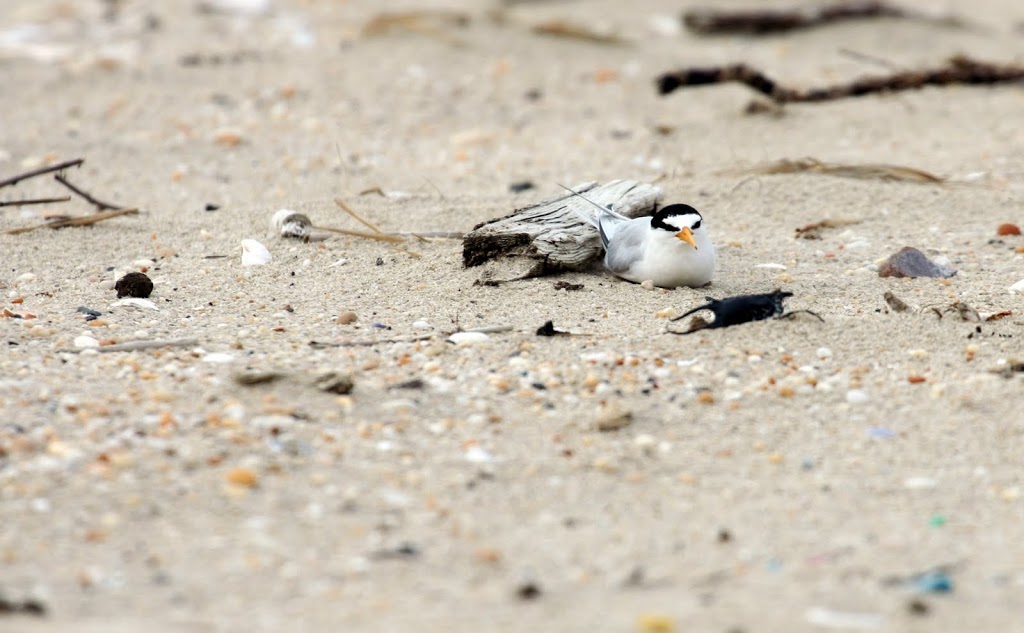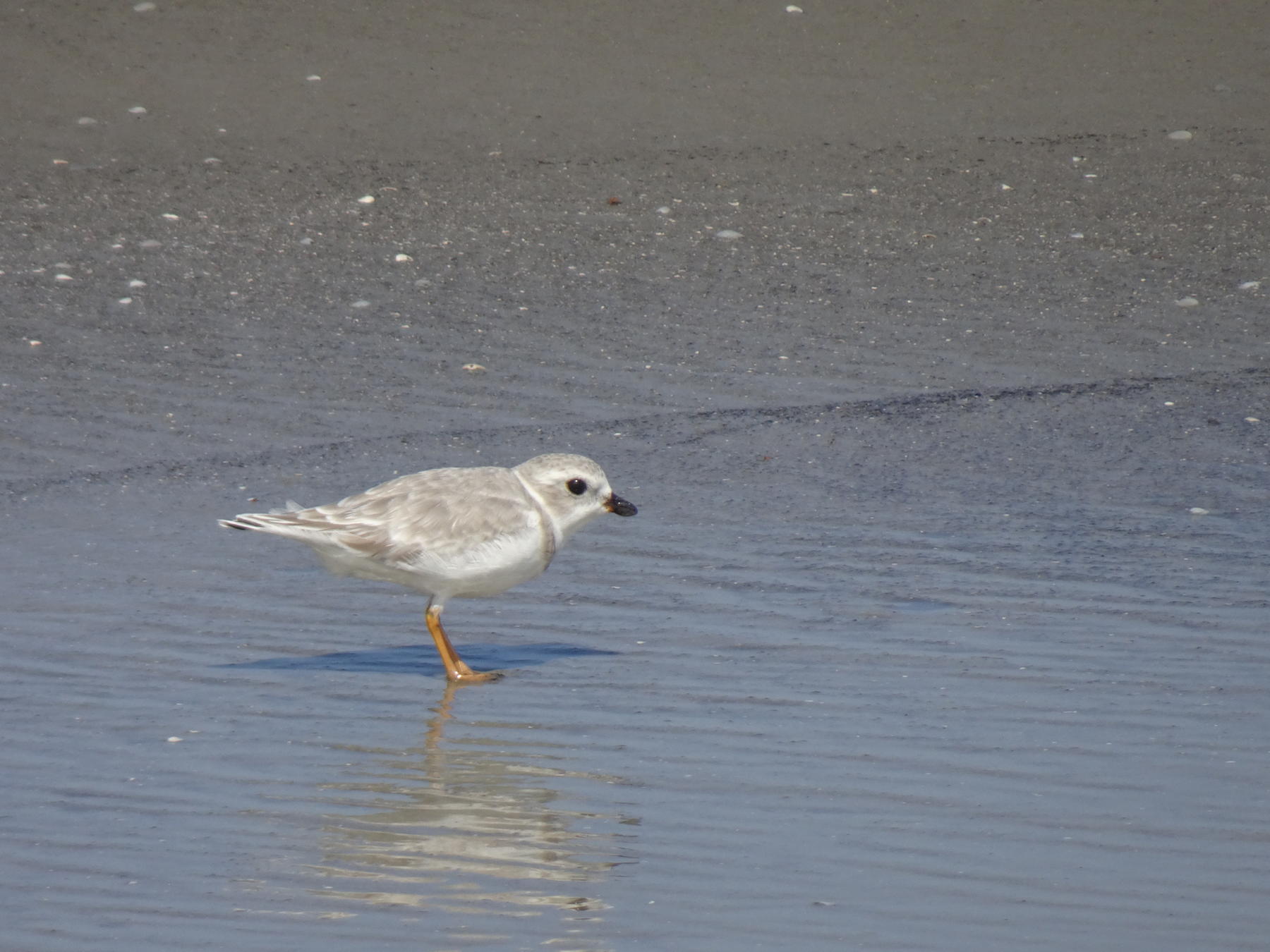My Heart and Piping Plovers
Jay Davis
October 18, 2023 info
In 2011, I celebrated the fourth of July at Seven Presidents Oceanfront Park on the Jersey Shore. By "celebrated," I mean that I volunteered to help keep fireworks-watchers away from the Piping Plovers, who were nesting on the same beach from which the fireworks were being launched.
Laura was the instigation for this. We arrived early and, after self-assigning ourselves a monitoring zone next to the roped-off bird nesting area, we spent the afternoon watching the plovers, with Laura watching via her 400mm lens. The plovers would come right down to the water's edge to feed, which meant they had to leave the roped-off area and make their way by any people who might be between them and the water.
This was probably the first time I saw a Piping Plover chick, a.k.a. gloriously cute fluff balls with toothpick legs:


Piping Plovers are precocial, meaning that they literally start running about, feeding themselves, shortly after they are born. The parents' role is mosty to herd them away from danger, or to harass crows or gulls that would like a fluff ball snack.
I was captivated by the idea that I could play a role in helping these endangered birds survive – for example, by acting as a human shield to other oblivious humans, pointing out the "cute endangered birds," and encouraging the humans to keep a respectful distance from the birds.
In the Summer of 2014, I helped this way as much as I could while Laura and I stayed on the northern Jersey Shore while she worked as a breeding bird monitor for New Jersey Fish and Wildlife. That summer, Monmouth Beach – even more bird inhospitable for plovers than Seven Presidents Park – had a pair of Pipling Plovers nesting on the seawall. I would show up in mid or late afternoon to observe, cajole, encourage and otherwise support the plovers.


By and large, when I spoke to non-birders about the plovers, they were receptive. In fact, often they were curious, wanted to know more, and would sometimes stand and talk with me about the plovers and other birds.
Once a young man had his volleyball go flying into the restricted area while I was there and I went running to intercept him before he got to the "off limits" area. I told him he could not pass the line and he responded: "Well how can I get my ball then?"
Stammering for a moment, I found myself answering, "I'll get it!" At least I knew what to look for – eggs camouflaged to look like sand and shells. I also knew that his ball wasn't particularly close to the Piping Plover nest scrape (on the seawall!), nor any Least Tern or American Oystercatcher nest scrapes.


The biggest hazard, from a human perspective, of entering the nesting areas on these beaches is the Least Terns. These miniature terns, like Piping Plovers, like to nest on sandy beaches – just the kinds of beaches that humans like. Their defense strategy is to fly at you, screeching, and poop on your head. Pretty effective. Laura had a big, floppy hat stained thoroughly by Least Terns.
In contrast, the other species on Monmouth Beach that Summer, Piping Plovers and American Oystercatchers, have their own distinctive nest-guarding strategies: Piping Plovers try to distract you and lure you away from the chicks using the "broken wing" display: "Here I am, poor me, hurt, come eat me, I'm easy to catch." Then when you get close, they fly away. Oystercatchers are drama queens: They fly around screaming and screeching making such a ruckus that you want to be anywhere but near them.
So having spent some time paying attention to these species on the nesting grounds, I developed a special attraction to each of them.
As to Jekyll Island, where I find myself today, the Piping Plovers don't nest here, but I see them sometimes in Fall as they pass through to their wintering grounds in the Bahamas or Florida. When I see one, my heart skips a beat. I wonder if this one came from Monmouth Beach or Seven President's Park. I wonder and marvel at them.
Last year on the south end of Jekyll Island (October 10, 2022), my heart skipped when I found this Piping Plover:




I'm back on Jekyll today and went looking in the same spot and found this Piping Plover. I wonder if it's the same one, perhaps from Monmouth Beach, one year later.
One thing I know: My heart is always standing on its tripod, ready for the next plover. Aimless Love.